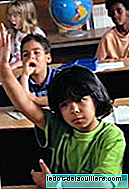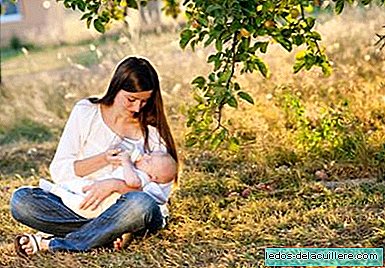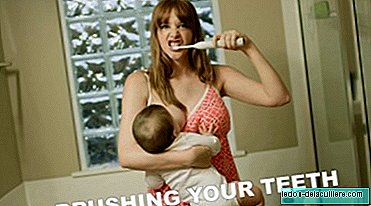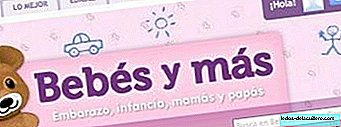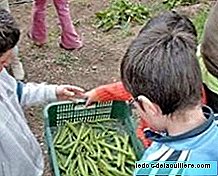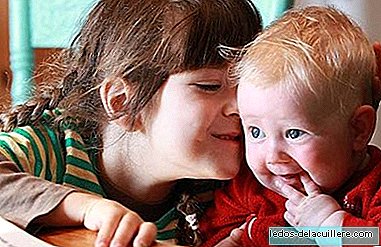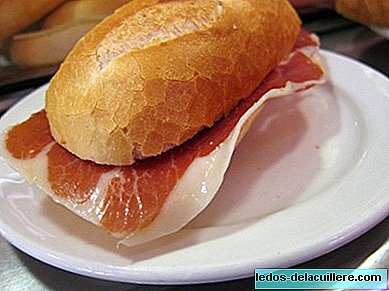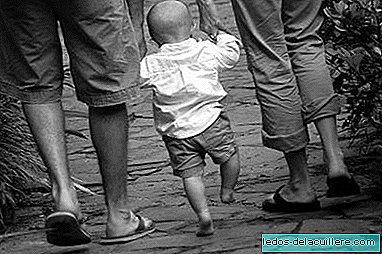
We continue with the series of entries intended to know how delays in the psychomotor development of children are detected.
The last day we stayed in those assessments that allowed us to evaluate children up to 9 months. Today we bring the explanation of the items to examine children up to 15 months.
To carry out the assessment, with the Haizea-Llevant Table, a vertical line must be drawn under the age that we want to evaluate and we will examine the boy or girl evaluating the actions on the left (including all those we have commented in previous days) and They intersect with the line. As the exam is done we will add the stars as explained in the entry of the Haizea-Llevant Table.
Exploration of the area of sociability
• Imitates simple gestures ** (9.2; 11; 13) Exploration (E): Try to clap, say goodbye with your hands, the "five little wolves", etc. We should not touch his hands or arms. Positive Response (RP): Let him do it.
• Brings a glass to the mouth ** (12; 12.8; 17.6) Material needed (M): A glass. E: Give him a glass of water and ask him to drink it. RP: If you take the glass that is given to you and drink it, even if you spill some liquid.
• Imitates household chores * (14; 15.6; 18.5) E: Ask if the child imitates household chores, such as dusting, sweeping, etc. RP: If the mother responds affirmatively at least to one of the proposals.
• Eat with a spoon * (14; 16; 21) E: Ask if the child puts the spoon in his mouth eating only, at least, the first tablespoons. RP: Keep the spoon by the handle and bring it to your mouth, even if you spill some of the food.
Language area exploration
• Understand the meaning of some words * (10.1; 11.3; 13.5) E: Without gestures, say the words: dad, mom, ball, chair etc. RP: If there is clearly an association between name and named person or object.
• Obey orders for gestures *** (10.5; 14.1; 18.2) E: Ask the mother if she obeys a gesture - without words - for example: "silence", "head shaking", "come here with your hands", etc. RP: If the mother answers affirmatively. The unspecific response, such as attention, fear, surprise, is not valid ...
• Says mom / dad properly *** (11.5; 13; 16) E: Observe or ask the mother if the child calls his father "dad" or "mom" his mother or "baby" his brother, during the exam. RP: If it does or the mother responds affirmatively.
Exploration area exploration
• Aim with the index * (10.2; 12.5; 16.1) RP: Use the index to point.
• Scribbles spontaneously * (13; 15; 22) M: Paper and pen E: Place a paper and a pen on the table, so that the child can easily pick it up. The examiner can put the pen in her hand, but not teach her how to scribble. RP: If you make two or more scribbles on paper. The way of holding the pen does not matter.
• Turns pages of a book (or story) * (13; 16; 21) E: Ask the mother if the child turns pages of a book. RP: Turn by itself 3 or more pages of a book. It doesn't matter if more than one happens at a time.
• Makes a tower with two cubes ** (15; 16.8; 21) M: Several cubes. E: Put several cubes in front of the child. The examiner shows you how to build a tower with two cubes. Put a cube in front of the child and, at the same time, give him another cube saying: “Look… we have made a tower. Now you also make a tower. ” Several attempts are allowed. RP: If he does. The tower has to be stable.
Postural area exploration
• Walk five steps alone * (12; 13; 15.5) E: Observe if the child is able to walk more than five steps without help or support. RP: Yes it does.
• Free March ** (13; 14; 16) E: Observe if the child walks alone carrying something in his hand and resume the march without having to have his arms open to maintain balance. RP: Yes it does.
• Stand up without leaning *** (13; 14.8; 16.3) E: Observe if the child passes from the positions of recumbency (lying down) to sitting and standing, without needing any other point of support other than the floor. RP: Yes it does.
• Free career ** (15; 16; 20) E: Observe or ask the mother if the child runs without help and safely more than 3 meters. RP: Yes it does. You must be able to stop without needing to rely on anything or anyone and stand.
• Walk backwards * (15; 17; 22) E: Observe or ask the mother if the child walks back two or more steps without support. RP: If it does or the mother responds affirmatively.
With this we end the examinations that are performed on children up to 15 months. In a few days we continue.
Photos | Flickr (Arkansas ShutterBug), Flickr (molly_darling), Flickr (lrargerich) On Babies and more | How delays in children's psychomotor development are detected (I), How delays in children's psychomotor development are detected (II): Haizea-Llevant Table, How delays in children's psychomotor development are detected ( III), (IV) and (V), Psychomotor development


